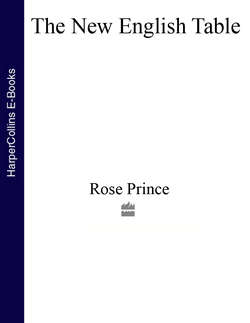Читать книгу The New English Table: 200 Recipes from the Queen of Thrifty, Inventive Cooking - Rose Prince - Страница 30
ОглавлениеBARLEY
Barley Cooked as for Risotto
Pot Barley and Lamb Broth
Pearl Barley with Turmeric, Lemon and Black Cardamom
Barley Water (the Queen’s Recipe)
Spiced Barley with Leeks, Root Vegetables, Oregano, Nutmeg, Allspice and Butter
Barley in Breadcrumbs
Superseded by wheat in almost all recipes, and now mainly used in brewing, barley is an ideal grain to rediscover from the annals of lost food plants and bring back into use in modest, everyday recipes. Now is a good time to think about eating grains other than the obvious ones, and to enjoy as many food plants as possible.
Before getting on to the science bit, I have to start by saying that since using new grains in my kitchen, life has got a lot more interesting. After years of pasta, risotto and pilav, suddenly I am tasting something with a totally new feel, scent and taste. I am yet to get some of these new grains past my children, who are happier to fork up basmati and penne. But my mother, who tried to feed us the then unfashionable Puy lentils in the 1970s, provoked a memory that must have steered me towards them when they properly arrived on the scene nearly 20 years later. So now when I put the new grains on the table and hear the inevitable refusal from the children, I know that they hear adults praise the dish, and I hope their curiosity will one day provoke them to have a try. I am sure they will do it when I am not looking, but I have learned that there is no point in making a child eat something when they are not ready.
Discovering, cooking and eating new grains matters. According to scientists at Biodiversity International, the organisation campaigning to preserve the gene bank of ‘lost’ foods, we depend on wheat, rice and maize for 50 per cent of our diet – a fact that challenges human health and opens to question our ability to deal with the effects of climate change. They say that people who eat more diverse diets are less prone to killer diseases, such as cardiovascular illness, cancer and diabetes. They also claim that avoiding the bank of over 7,000 edible plants means we miss out on essential nutrients.
It’s a bit of a tall order to expect anyone to keep 7,000 foods in their larder, but the basic message is that the balance of our diet has been lost. Daily bread should not always be wheat but occasionally another grain or, better still, a combination of several. In terms of the environment, demand for a diverse diet encourages more innovation in agriculture. The monoculture dominated by wheat, rice and maize is vulnerable to disease and pests but widening the range of crops ‘confuses’ these threats – one crop’s enemy is not that of another. A pest that destroys a certain breed may not touch others. Hence less need to treat with pesticides, a longer season (given that different strains of species ripen at intervals) and so more food. There is also evidence that cultivating a greater number of grains, vegetables and fruits can benefit the wealth of farming communities in developing countries. It’s obvious, though, isn’t it? With just three main grain plants dominating the food chain, and every country fighting to make money from farming and be a part of the global marketplace, there are going to be those at a natural disadvantage – namely those farmers who do not receive subsidies and nations who pay levies on exports.
In the UK, the range of grains we can include in our own diet includes rye, oats, spelt and the various strains among these species. Likewise we could expand our repertoire on the vegetable and fruit front, too (see Apples). Barley is a good starting point. It is the oldest cultivated grain in not only Europe and the Middle East but also possibly the world. Some historians believe that it may have been grown in China before rice. Looking at my store of pearl and pot barley, I wondered about this. Pearl barley, like white rice, has had all the bran milled away, leaving a mild-flavoured grain; pot barley still retains some bran, whose oils turn up the flavour volume. Barley has lower protein levels than wheat, hence its gradual decline – it was thought the poor could never be fed on such a grain – but it is sad to miss out on its delicate nature. Why not use it in a recipe and divert attention away from rice for a change?
Buying barley
Pearl barley is available in every supermarket but you may have to go to a wholefood store for pot barley – the one with the bran. The Infinity Foods brand of organic pot barley is widely available (www.infinityfoods.co.uk; tel: 01273 424060).
